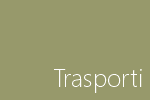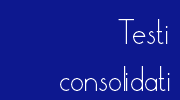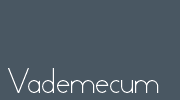Applications Manual for the Revised NIOSH Lifting Equation (RNLE) 2021
| ID 19958 | | Visite: 2180 | Documenti Sicurezza Enti | Permalink: https://www.certifico.com/id/19958 |
Applications Manual for the Revised NIOSH Lifting Equation (RNLE) / Update 2021
ID 19958 | 12.07.2023 / In attachment
This 2021 manual is an updated version of the Applications Manual for the Revised NIOSH Lifting Equation (RNLE) published in 1994.
This update of the RNLE manual corrects typographical errors in the previous version and is reformatted to be searchable and 508 compliant. Specific changes are summarized on page xi.
Publication of the RNLE in 1994 generated substantial interest among researchers and field safety professionals, and has contributed to improved risk assessments for manual lifting jobs.
A notable improvement included validating the task variables used to compute the Recommended Weight Limit (RWL).
Additional studies validated the Lifting Index (LI) as a measure of risk for workers performing manual lifting jobs. Based on the findings from these studies, the LI calculated from the RNLE is well-regarded as a valid and practical tool for assessing the risk of low back disorders associated with most twohanded manual lifting tasks. In addition, surveys have shown that certified professional ergonomists in the United States and many other English-speaking countries recognize the RNLE as an effective ergonomic risk assessment tool.
The RNLE has contributed greatly to ergonomic risk assessments and prevention of work-related low back disorders. It has served as the basis for standard setting by the International Organization for Standardization (ISO) for their standard 11228-1 as well as the industry trade associations, Automotive Industry Action Group and Society of Automobile Engineers, for their Ergonomic Guidelines for Small Lot Delivery Operations.
As a direct result of the wide application of the RNLE in assessing manual lifting tasks, many other LI values, such as the sequential LI, variable LI, and cumulative LI have been developed and validated by the research community.
The 1994 version of the manual will be archived online by NIOSH as a permanent record.
For citation of the RNLE applications manual, use the citation suggestion provided in the updated manual. Finally, the significant contributions of the late Dr. Thomas R. Waters and the late Dr. Arun Garg to the development of the RNLE and their efforts to validate associated outcomes of the RNLE are gratefully acknowledged. The RNLE is anticipated to continue serving workers and employers well by contributing to the prevention of low back disorders, which are common and costly musculoskeletal health problems in the workplace.
Extract
1 The revised lifting equation
This section provides the technical information for using the revised lifting equation to evaluate a variety of two-handed manual lifting tasks. Definitions, restrictions/limitations, and data requirements for the revised lifting equation are also provided.
1.1 Definition of Terms
1.1.1 Recommended Weight limit (RWL)
The RWL is the principal product of the revised NIOSH lifting equation. The RWL is defined for a specific set of task conditions as the weight of the load that nearly all healthy workers could perform over a substantial period of time (e.g., up to 8 hours) without an increased risk of developing lifting-related LBP. By healthy workers, we mean workers who are free of adverse health conditions that would increase their risk of musculoskeletal injury. The RWL is defined by the following equation:
RWL = LC x HM x VM x DM x AM x FM x CM
A detailed description of the individual components of the equation are provided in Section 1.3.
[...]
1.3 The Equation and Its Function
The revised lifting equation for calculating the Recommended Weight Limit (RWL) is based on a multiplicative model that provides a weighting for each of six task variables. The weightings are expressed as coefficients that serve to decrease the load weight to be lifted under ideal conditions. The RWL is defined by the following equation:
RWL = LC x HM x VM x DM x AM x FM x CM
Where:
[...]
3.2 Jobs Performed a Few Times per Shift
3.2.1 Loading Punch Press Stock, Example 1
3.2.1.1 Job Description
Figure 5 illustrates a common oversight in physically stressful jobs. A punch press operator routinely handles small parts, feeding them into a press and removing them. A cursory view of this task may overlook the fact that once per shift the operator must load a heavy reel of supply stock (illustrated at floor height) from the floor onto the machine. The diameter of the reel is 30 inches, the width of the reel between the worker’s hands is 12 inches, and the reel weighs 44 lbs. significant control of the load is required at the destination of the lift due to the design of the machine. Also, the worker cannot get closer to the roll (i.e., between the legs) because the roll is too awkward.
Figure 5: Loading Punch Press Stock, Example 1
[...]
3.2.2 Loading Supply Rolls, Example 2
3.2.2.1 Job Description
With both hands directly in front of the body, a worker lifts the core of a 35-lb roll or paper from a cart, and then shifts the roll in the hands and holds it by the sides to position it on a machine, as shown in Figure 8. Significant control of the roll is required at the destination of the lift. Also, the worker must crouch at the destination of the lift to support the roll in front of the body, but does not have to twist.
Figure 8: Loading Supply Rolls, Example 2
[...]
3.3 Single Task, Performed Repetitively
3.3.1 Package Inspection, Example 4
3.3.1.1 Job Description
The job illustrated in Figure 13 consists of a worker inspecting compact containers for damage on a low shelf, and then lifting them with both hands directly in front of the body from shelf 1 to shelf 2 at a rate of 3/min for a duration of 45 minutes. For this analysis, assume that (1) the worker cannot take a step forward when placing the object at the destination, due to the bottom shelf, and (2) significant control of the object is required at the destination. The containers are of optimal design, but without handles. (For classification, refer to Table 6).
Figure 13: Package Inspection, Example 4
...
add in attachment
Collegati
(MMC) Movimentazione manuale dei carichi | UNI ISO 11228-1:2022
UNI ISO 11228-1:2022 - MMC / Sollevamento, abbassamento e trasporto
ISO 11228-1:2021
| Descrizione | Livello | Dimensione | Downloads | |
|---|---|---|---|---|
| Applications Manual for the Revised NIOSH Lifting Equation (RNLE) 2021.pdf CDC NIOSH 2021 |
16808 kB | 170 |












































